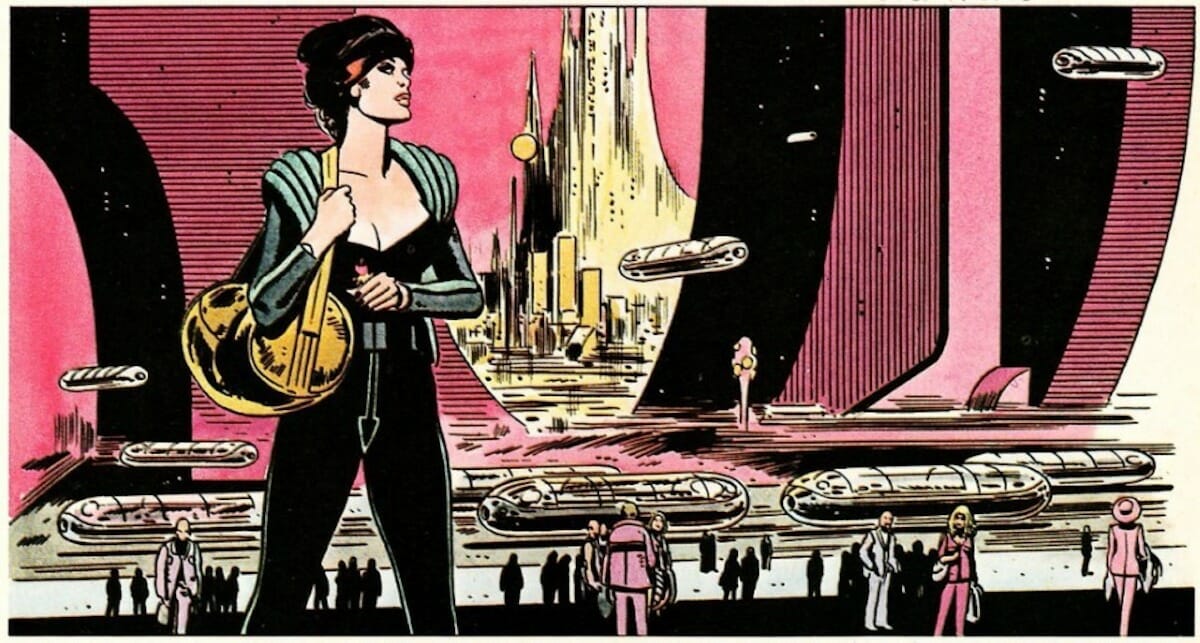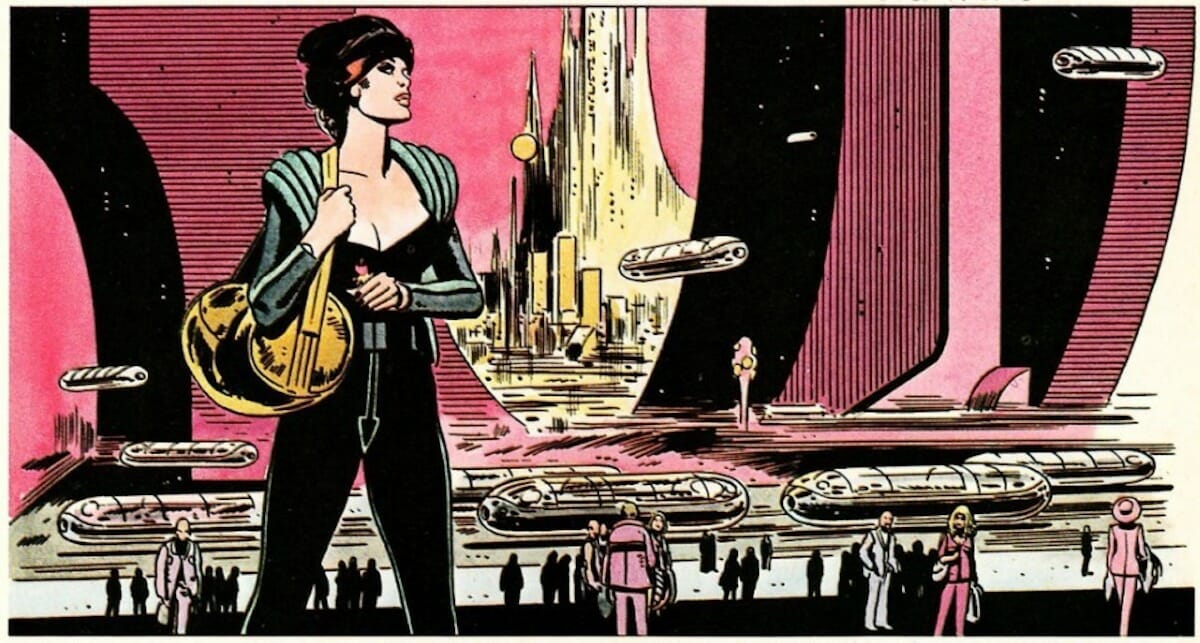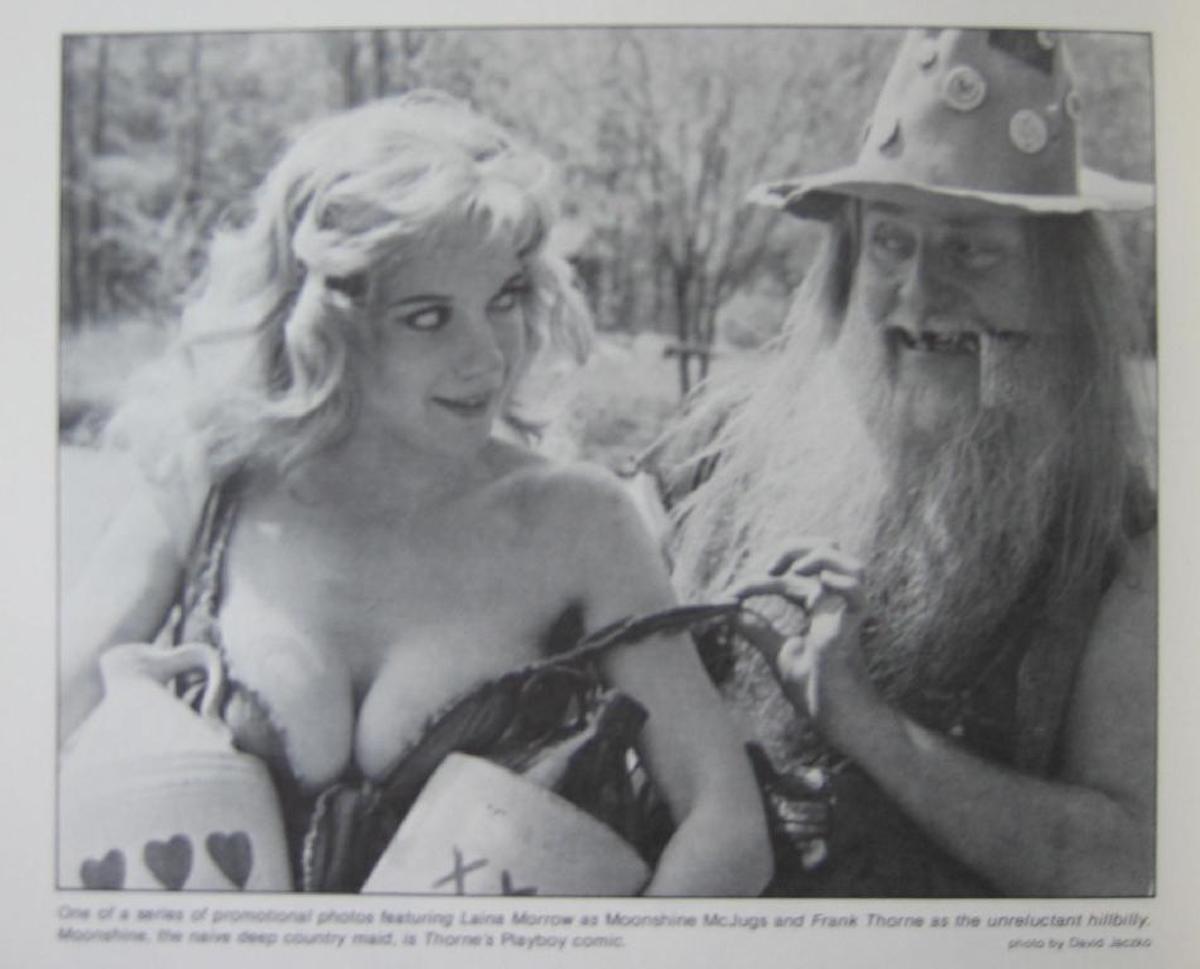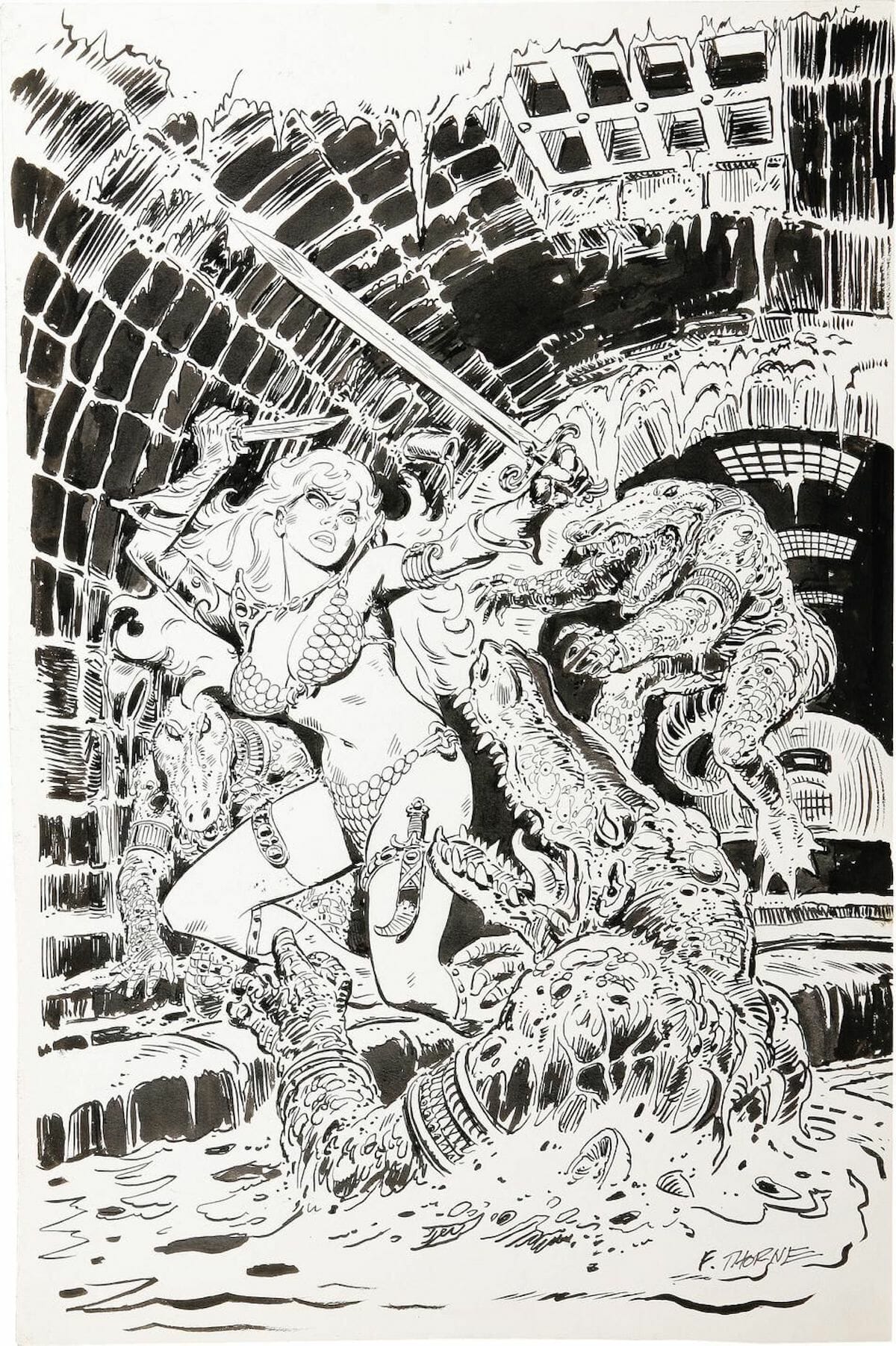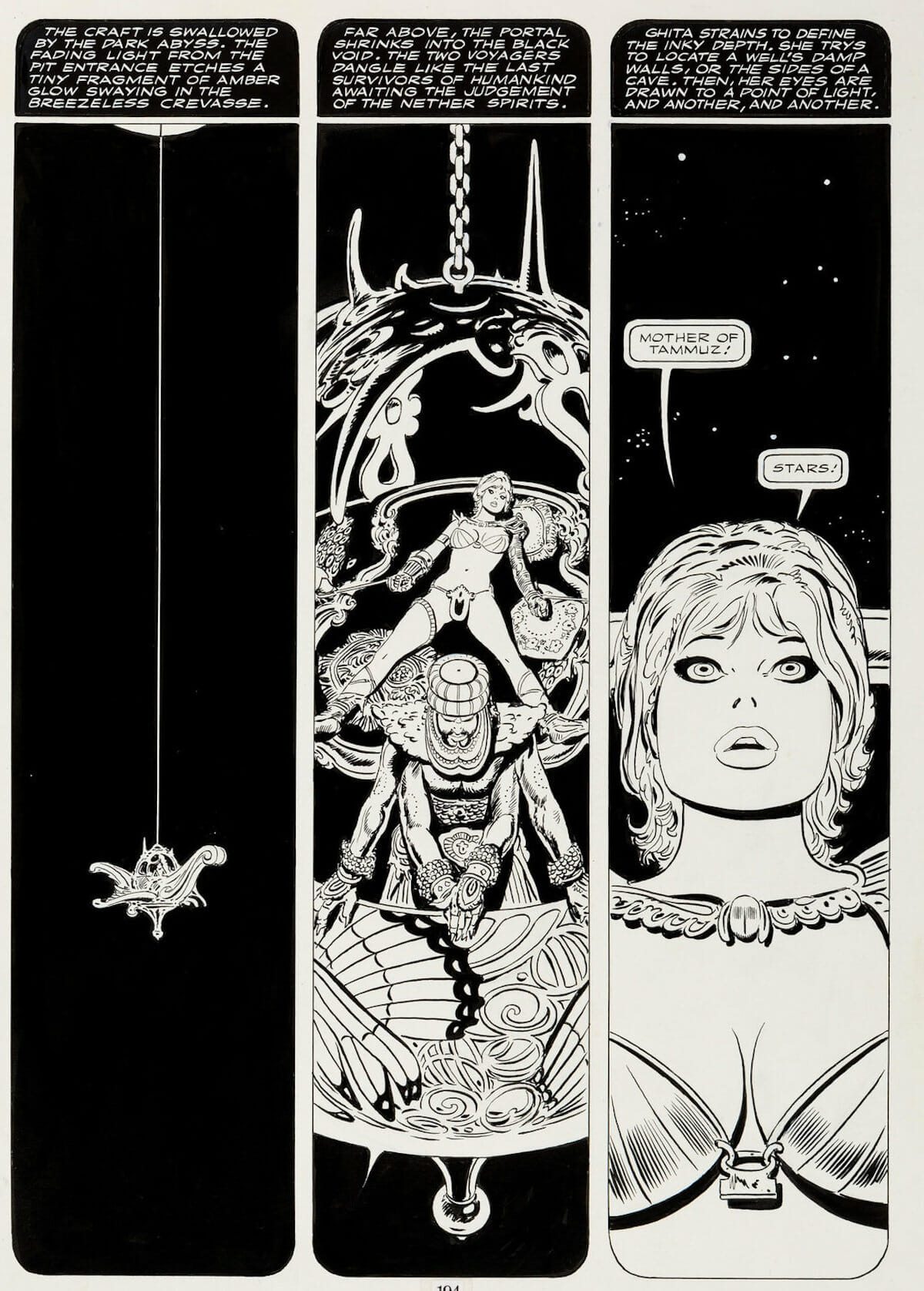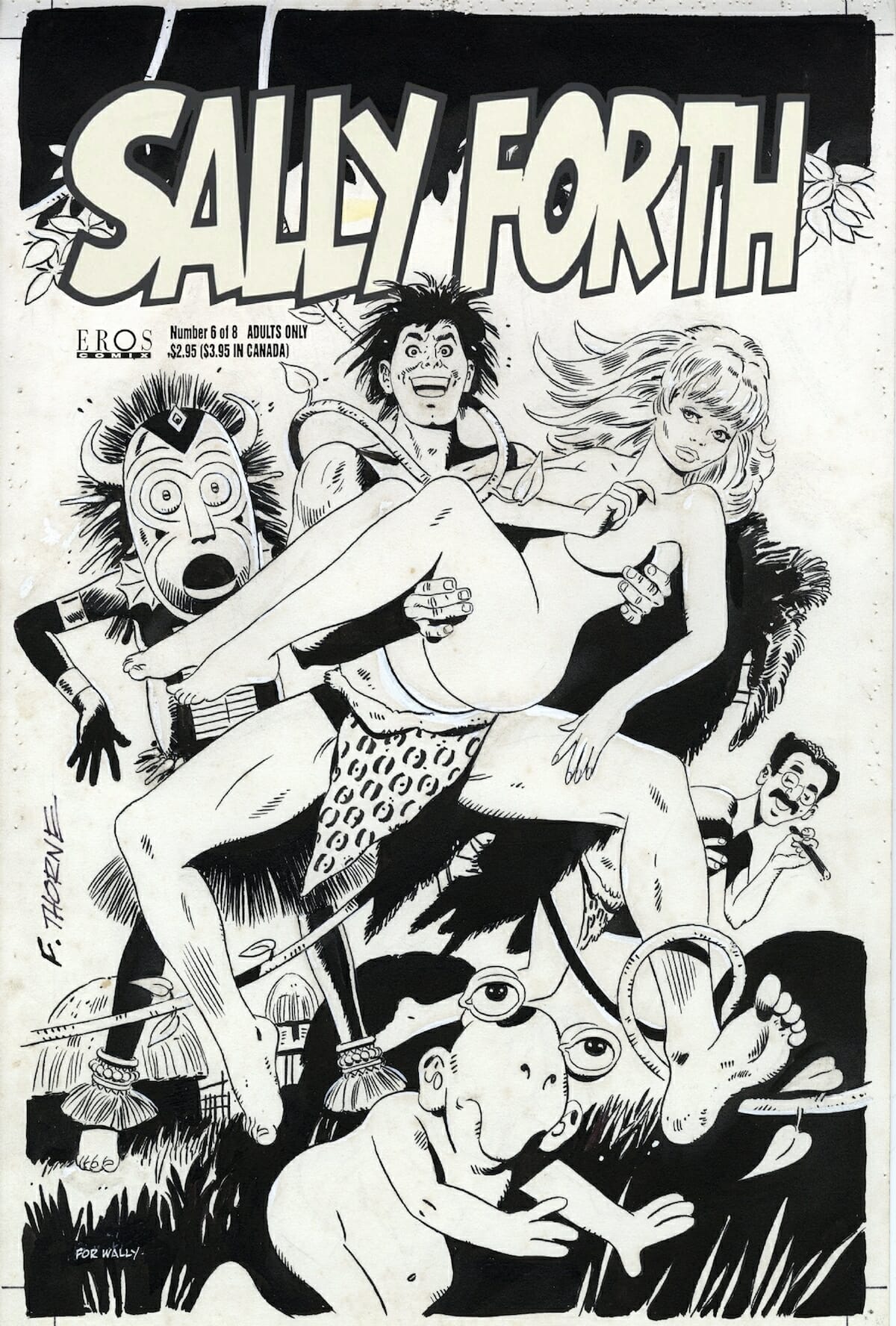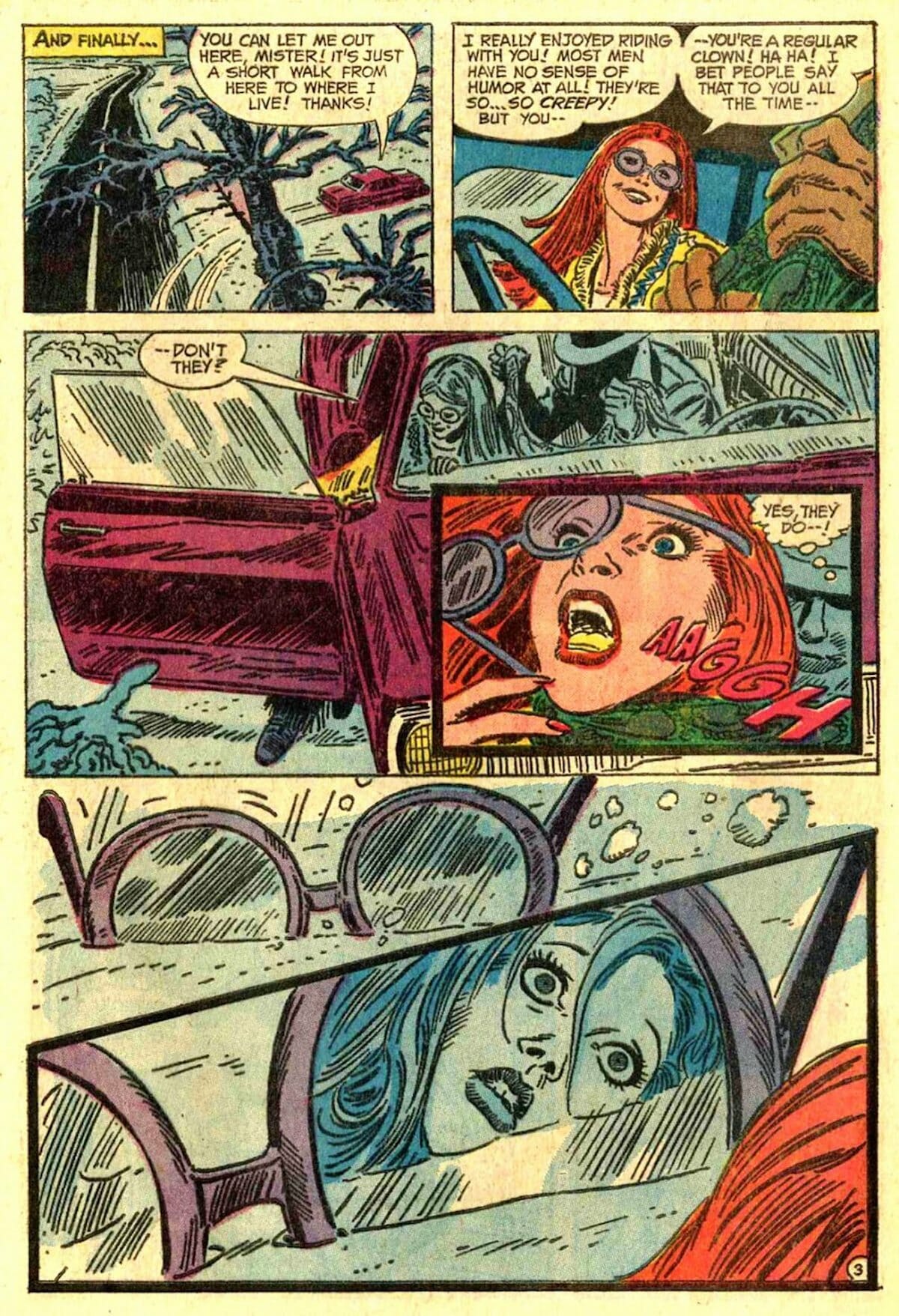News broke late Sunday that Frank Thorne, the comic book creator best known for his work on Marvel’s Red Sonja series in the 1970s, had died. He was 90 years old.
Although known primarily as an “erotic fantasy” artist for his Sonja work as well as strips for Playboy and Heavy Metal — not to mention his own Erotic Worlds of Frank Thorne anthology — Thorne got his start as a romance comics artist in the late 1940s, before working as a newspaper strip cartoonist for King Features Syndicate, working on Perry Mason, Flash Gordon, Jungle Jim and many other strips before moving to LaFave Newspaper Features for a six year stint on the Dr. Guy Bennett strip, starting in 1957.
Such a background in “mainstream” cartooning — one that includes a 1963 award from the National Cartoonists Society in the Comic Book category — underscores a simple fact about Thorne that often gets lost or ignored in favor of the more salacious appeal of the overly voluptuous vixens of his later work: Thorne was an incredible illustrator. His line was reminiscent of Alex Toth and Milton Caniff, but his layouts were arguably more dynamic than either, excitedly overlapping and overflowing as if drunk on the potential on every page.
That said, it’s very easy to become distracted by Thorne’s “sexier” side, not least because of the manner in which he promoted himself during this period of his career. Inspired by the success of his Red Sonja work for Marvel, and well aware of the particular pendulous appeal this era held for many new fans, Thorne created an entirely new public persona to use at comic book conventions, with the aid of a surprising sidekick.
While “the Wizard” — alternately, “the Wizard of Comic Arts,” in some appearances — might not have had the most imaginative name, the magical alter-ego that Thorne created in the 1970s was nonetheless a strange and memorable development that made him unique in the comic book industry at the time: wearing an elaborate gown created, according to Thorne, by “a church lady… during Bible Class,” Thorne would be accompanied by Wendy Pini, later of Elfquest fame, cosplaying as Red Sonja — a sure way to get fanboy attention at any social gathering. Together, the two would appear in increasingly elaborate performances that expanded the fantasy outings of Thorne’s comics into the real world, or something approaching it.
That the Wizard was somewhat outlandish and especially extra was, in many ways, a sign of where Thorne’s career was headed. Following Red Sonja, he devoted himself more and more to material where the focus was on strong women who just happened to have big breasts. For Heavy Metal, he created the sci-fi strip Lann, for 1984 magazine, he created Ghita of Alizarr, and for Playboy, he created the wonderfully-named Moonshine McJugs, taking full advantage of the lack of subtlety and perverted humor available in the Hefner empire. (Let’s face it though: anyone who sees the name Moonshine McJugs and is not at least curious to read it may be clinically dead, so let’s just say that he was totally on to something.)
All of this material, the subject of obsessive if secretive collections by a substantial audience — enough to support not only the Erotic Worlds anthology, but also multiple high quality collected editions from publishers including Fantagraphics and Hermes Press — stemmed from his inimitable Red Sonja work, a project that he described in a 2007 interview as a “coming out party” that allowed him to finally bring his obsession with drawing “sexy” women into his work after years of keeping it to himself.
That obsession, which Thorne put down to discovering his father’s porn collection as a child in a 2019 interview, didn’t just keep him in work until his death — he was still working on private commissions all the way until the end — but gave him a niche that he made the very most of for decades, satisfying himself and an eager, randy, loyal audience that appreciated everything he did. His was a career, a life— and a fantastically shameless marriage between art and porn — for others to aspire to.
